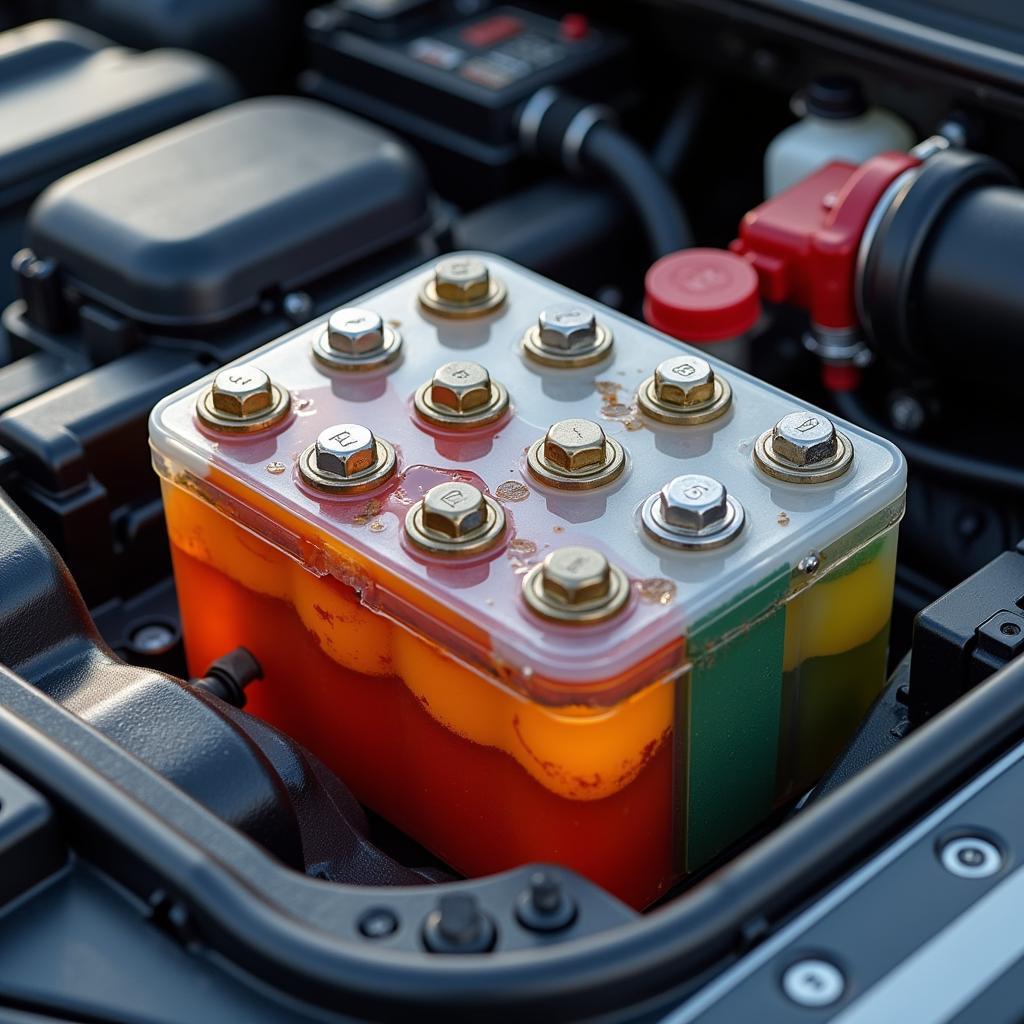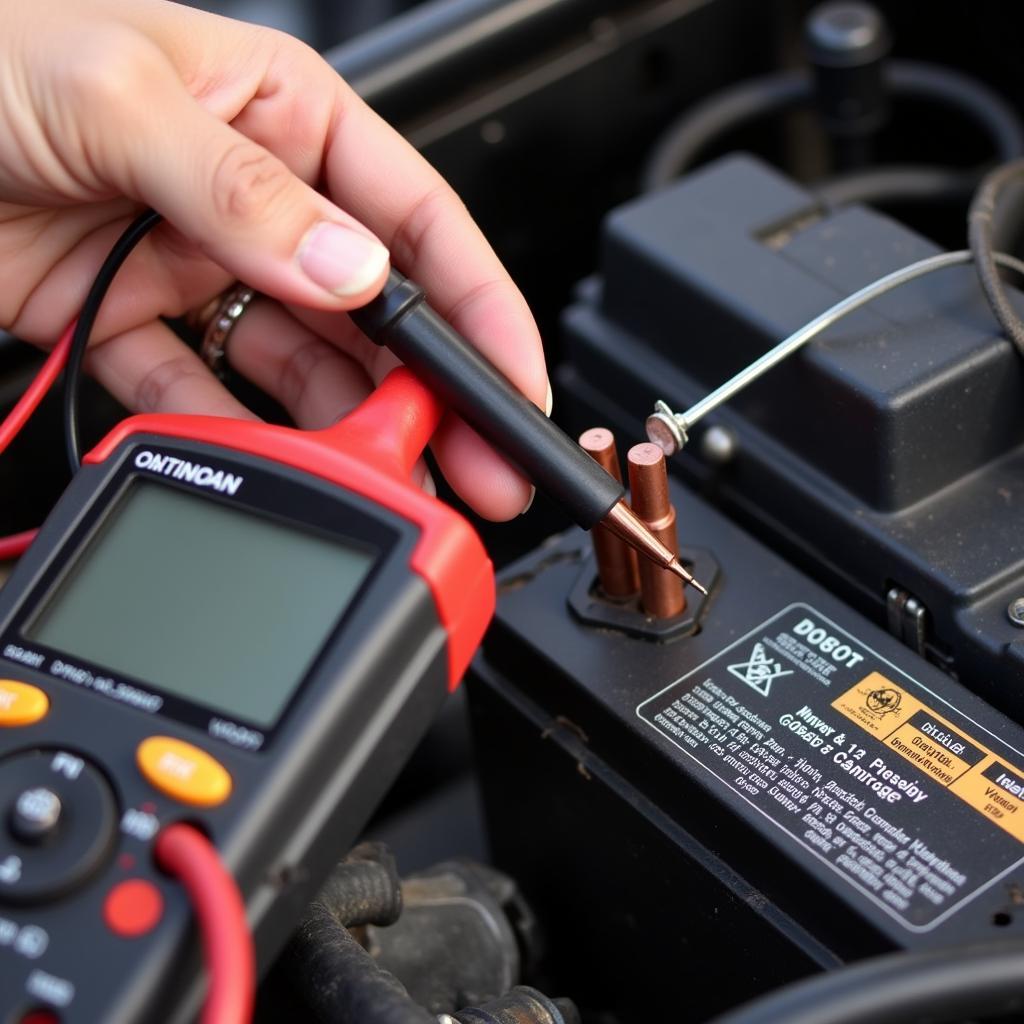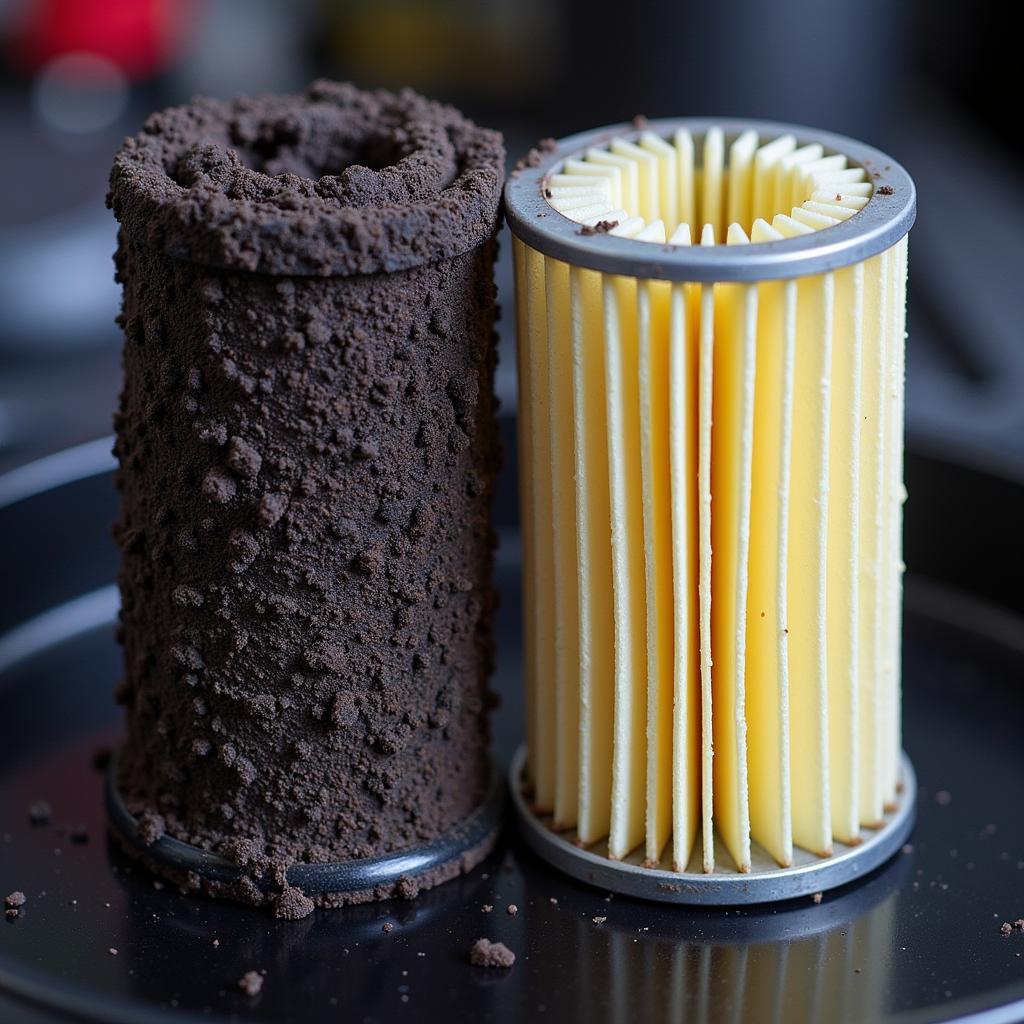Car batteries are essential for starting your vehicle and powering various electrical components. Understanding battery acid and its lifespan is crucial for maintaining a healthy car battery. So, does battery acid go bad? The short answer is yes, but it’s a bit more complicated than that. Let’s dive into the details of battery acid, how it works, and how to maintain it for optimal vehicle performance.
What is Battery Acid and How Does It Work?
Battery acid, also known as electrolyte, is a solution of sulfuric acid and water. This solution plays a vital role in the chemical reaction within a lead-acid battery that produces electricity. When you start your car or use electrical components, the battery acid facilitates the flow of electrons between the positive and negative plates of the battery. This flow of electrons creates the electrical current that powers your vehicle.
 Car Battery Electrolyte Solution
Car Battery Electrolyte Solution
How Does Battery Acid “Go Bad”?
Battery acid doesn’t “go bad” in the traditional sense of spoiling. Instead, it degrades over time through a process called sulfation. During sulfation, lead sulfate crystals form on the battery plates. These crystals hinder the chemical reaction, reducing the battery’s ability to hold a charge and eventually leading to its demise. Several factors contribute to sulfation, including:
- Extreme Temperatures: Both high and low temperatures can accelerate sulfation.
- Overcharging/Undercharging: Incorrect charging practices can also lead to sulfate buildup.
- Age: Like any chemical compound, battery acid naturally degrades over time.
- Vibration: Excessive vibration can dislodge active material from the battery plates, contributing to sulfation.
Identifying “Bad” Battery Acid
Several signs indicate your battery acid is no longer performing optimally:
- Difficulty Starting: If your car struggles to start, especially in cold weather, it might be a sign of sulfation and weakened battery acid.
- Dim Headlights: Dim headlights, especially when the engine isn’t running, can suggest a low battery charge.
- Slow Cranking: A slow engine crank is another telltale sign of a weakened battery.
- Low Electrolyte Level: You can visually inspect the battery cells (if accessible) for a low electrolyte level, which can be an indicator of acid degradation. However, handle battery acid with extreme caution as it is highly corrosive.
 Checking Car Battery Health
Checking Car Battery Health
“Regularly checking your battery health, including the electrolyte level and voltage, can prevent unexpected breakdowns and extend the lifespan of your battery,” says John Miller, Senior Automotive Technician at Advanced Auto Solutions.
Maintaining Your Car Battery
While you can’t reverse sulfation in a severely damaged battery, you can take steps to prolong the life of your battery acid and the battery itself:
- Keep the Battery Clean: Clean any corrosion around the battery terminals with a mixture of baking soda and water.
- Check the Electrolyte Level (if applicable): If your battery allows it, check the electrolyte level and top it off with distilled water if necessary. Always wear safety glasses and gloves when working with battery acid.
- Maintain Proper Charging: Ensure your car’s charging system is functioning correctly to avoid overcharging or undercharging.
- Limit Short Trips: Short trips prevent the battery from fully recharging, which can contribute to sulfation.
Can You Replace Battery Acid?
In some cases, particularly with flooded lead-acid batteries, you can replace the battery acid. However, this process should be performed by a qualified technician as it involves handling corrosive chemicals. For sealed batteries, replacing the acid is generally not possible or recommended.
“Replacing battery acid is a delicate process that requires proper safety precautions and technical knowledge. If you’re unsure about handling battery acid, it’s best to consult a qualified professional,” advises Sarah Chen, Lead Electrical Systems Engineer at Automotive Innovations Group.
Conclusion
Does battery acid go bad? Yes, through the process of sulfation. By understanding how battery acid degrades and implementing preventative measures, you can significantly extend the lifespan of your car battery. Regular maintenance, including checking the electrolyte level (where applicable), cleaning the terminals, and ensuring proper charging, can keep your battery running smoothly for years to come. If you’re experiencing any issues with your car battery, don’t hesitate to consult a qualified automotive technician for a proper diagnosis and solution.
FAQ
-
What is the lifespan of car battery acid? The lifespan of car battery acid is directly linked to the lifespan of the battery itself, typically 3-5 years.
-
Can I use tap water to top off the electrolyte level? No, you should only use distilled water as tap water contains minerals that can contaminate the battery acid.
-
How often should I check my battery? It’s a good idea to check your battery every few months, or more frequently in extreme weather conditions.
-
What are the signs of a bad car battery? Signs of a bad car battery include difficulty starting, dim headlights, slow cranking, and a swollen battery case.
-
Can I recharge a completely dead battery? It might be possible to recharge a completely dead battery, but it depends on the extent of the damage. A severely sulfated battery may be beyond recovery.
-
How do I dispose of old battery acid? Battery acid should be disposed of properly at a designated hazardous waste collection center. Never pour it down the drain.
-
Is it safe to jump-start a car with a bad battery? Yes, it is generally safe to jump-start a car with a bad battery, as long as you follow the proper procedures and safety precautions.

